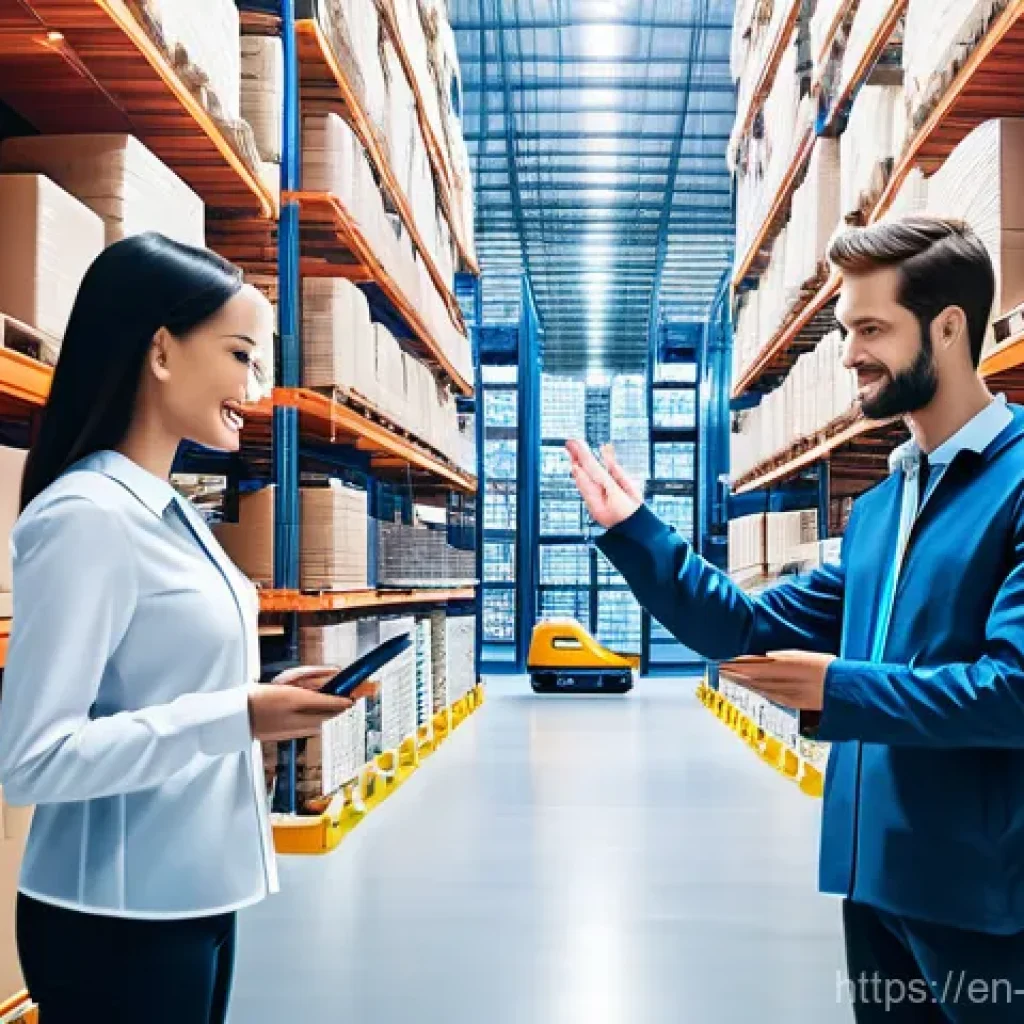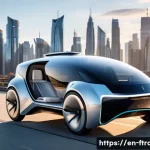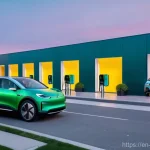The logistics world, as we knew it, is changing faster than ever, and frankly, it’s thrilling to watch! Gone are the days of endless paperwork and slow, unpredictable deliveries.
We’re now squarely in the era of “smart logistics,” where cutting-edge technology isn’t just a buzzword, it’s the very heartbeat of efficiency and innovation.
I’ve personally been amazed by how AI, IoT, and even robotics are completely transforming how goods move around the globe, making everything smoother, faster, and surprisingly more sustainable too.
From predicting demand with uncanny accuracy to ensuring your package arrives exactly when promised, the advancements hitting the scene in 2025 are truly game-changers for businesses and consumers alike.
If you’re curious about how these incredible shifts are impacting everything from warehouse floors to your doorstep, and what it all means for our future, then you’re in the right place!
Let’s accurately uncover the fascinating details of this revolution.
The Brains Behind the Movement: AI and Predictive Power

Unlocking Unseen Patterns with Advanced Analytics
The sheer volume of data being generated in logistics these days is mind-boggling, isn’t it? But what’s truly revolutionary is how AI isn’t just collecting it; it’s making sense of it all in ways we could only dream of a few years ago.
I’ve personally seen how companies are leveraging AI to predict demand with an uncanny accuracy that makes traditional forecasting look like guesswork.
Think about it: anticipating which products will fly off the shelves in specific regions, or knowing exactly when a certain component might run low, all before it even becomes an issue.
This isn’t just about avoiding stockouts; it’s about optimizing inventory levels to the nth degree, reducing waste, and making sure goods are where they need to be, precisely when they’re needed.
It’s a game-changer for profitability, and frankly, it just makes everything feel a lot smoother. I remember a time when a sudden surge in demand meant scrambling, but now, with AI’s predictive capabilities, it feels like we’re always one step ahead.
It brings such a sense of calm to what used to be a very reactive industry.
Real-Time Route Optimization: Smarter Journeys, Faster Deliveries
Gone are the days when a delivery truck followed a static, pre-planned route, come rain or shine, traffic jam or clear road. My jaw has dropped watching how AI-powered systems are dynamically optimizing routes in real-time, minute by minute, taking into account everything from live traffic conditions to weather patterns and even driver availability.
This isn’t just about shaving a few minutes off a journey; it’s about massive fuel savings, significantly reduced carbon emissions, and ensuring packages reach their destination much faster and more reliably.
For businesses, this translates directly to happier customers and a much leaner operational cost. I’ve experienced the frustration of waiting for a package stuck in unknown transit, and now, with these smarter systems, the transparency and predictability are truly a breath of fresh air.
It feels like magic, but it’s just brilliant algorithms at work, making every mile count.
Automated Muscle: Robotics Taking Over the Heavy Lifting
Warehousing Wonders: From Human Hands to Robotic Precision
If you haven’t seen a modern automated warehouse in action, you’re missing out on a truly astonishing spectacle. I recently had the chance to visit one, and honestly, it was like stepping into the future.
Rows upon rows of autonomous mobile robots (AMRs) gracefully zipping around, picking and placing items with incredible speed and accuracy. It’s not about replacing humans entirely; it’s about letting robots handle the repetitive, strenuous, and often dangerous tasks, freeing up human workers for more complex, decision-making roles.
This shift means fewer workplace injuries, increased operational speed, and a level of consistency that’s impossible to achieve with manual labor alone.
I’ve always believed in the power of innovation to improve working conditions, and seeing these robots perform tasks that used to be back-breaking felt genuinely progressive.
It truly elevates the entire warehousing experience, making it safer and vastly more efficient.
Last-Mile Marvels: Drones and Autonomous Vehicles
The “last mile” has always been the most challenging and costly part of the delivery process. But oh, how things are changing! While still in their nascent stages in many areas, the potential of drones and autonomous delivery vehicles is absolutely thrilling.
Imagine a future where a drone effortlessly drops your package right on your doorstep, or a small autonomous vehicle navigates suburban streets with your groceries.
I know some folks might be a bit skeptical, but I’ve seen the rigorous testing and the incredible progress being made. These technologies promise to cut delivery times dramatically, especially in densely populated urban areas or hard-to-reach rural locations, and significantly reduce the carbon footprint associated with traditional vehicle fleets.
It’s about making deliveries not just faster, but smarter, cleaner, and ultimately, more convenient for everyone. The thought of my coffee arriving via a quiet, electric drone certainly adds a touch of futuristic excitement to my morning routine!
The Internet of Things: Every Asset, Always Connected
Smart Tracking: Visibility from Origin to Destination
The feeling of not knowing where your shipment is, or if it’s even on schedule, is a logistics nightmare of the past thanks to the Internet of Things (IoT).
I remember countless times frantically calling customer service to track down a crucial delivery. Now, with IoT sensors embedded in everything from individual packages to entire shipping containers, we’re talking about unprecedented levels of visibility.
These tiny devices can monitor location, temperature, humidity, and even detect if a package has been opened or tampered with. This real-time data flow means businesses can pinpoint exactly where their goods are at any moment, anticipate potential delays, and react proactively.
For me, as a consumer, it’s the peace of mind of knowing exactly when my online order will arrive, and for businesses, it’s about reducing loss, improving security, and ensuring product integrity throughout the entire journey.
It’s a significant leap forward in transparency.
Preventative Maintenance: Keeping Fleets on the Road
One of the silent heroes of IoT in logistics is its incredible impact on asset management, particularly for vehicle fleets. Imagine a world where truck breakdowns are dramatically reduced because sensors are constantly monitoring engine performance, tire pressure, fuel levels, and countless other metrics, predicting potential issues before they even become problems.
I’ve heard stories from fleet managers who’ve slashed their maintenance costs and practically eliminated unexpected roadside failures thanks to these smart systems.
This isn’t just about saving money; it’s about ensuring drivers are safe, deliveries are on time, and the entire supply chain remains uninterrupted. It moves us from reactive repairs to proactive care, making operations smoother, more reliable, and ultimately, much more profitable.
This shift has such a profound impact on the efficiency and safety of moving goods, it’s truly remarkable to observe.
Embracing Sustainability: Greener Logistics for a Brighter Future
Eco-Conscious Operations: Reducing the Carbon Footprint
It’s no secret that the logistics industry has historically been a significant contributor to carbon emissions. However, I’ve been incredibly heartened to see how smart logistics is fundamentally changing this narrative.
With intelligent route optimization, efficient warehouse automation, and the growing adoption of electric and autonomous vehicles, the environmental impact is being actively and significantly reduced.
Companies are now able to precisely measure their emissions, identify inefficiencies, and implement strategies that not only save money but also contribute positively to the planet.
I think it’s fantastic that technology is enabling businesses to be both profitable and environmentally responsible. It’s a huge step towards making global trade sustainable, and personally, I feel much better supporting companies that actively prioritize these kinds of green initiatives.
This isn’t just corporate responsibility; it’s smart business that benefits us all.
Waste Not, Want Not: Optimizing Resources

Beyond just emissions, smart logistics is doing wonders for resource optimization, which directly translates to less waste across the board. From minimizing packaging materials through intelligent design and robotic handling to ensuring that perishable goods reach their destination before spoiling, every aspect of the supply chain is becoming more efficient.
AI’s ability to predict demand means less overproduction, and better inventory management reduces the amount of unsold or expired goods. I’ve always been a big believer in reducing waste, and seeing these technological advancements tackling such a massive problem makes me incredibly optimistic.
It’s about creating a leaner, more agile system that uses precisely what it needs, when it needs it, and avoids the unnecessary consumption of resources.
This approach truly resonates with me, as it’s both economically sound and ethically responsible.
The Human Touch: Empowering the Workforce in a Smart Era
Upskilling for the Future: New Roles and Opportunities
While it’s easy to focus on the robots and algorithms, I believe one of the most exciting aspects of smart logistics is how it’s transforming the human element of the workforce.
Far from rendering jobs obsolete, these technologies are creating new, more engaging roles. Think data analysts, drone operators, robotics technicians, and specialists in AI-driven supply chain management.
I’ve observed firsthand how employees are being reskilled and upskilled, moving from repetitive manual tasks to more analytical and strategic positions.
This shift empowers individuals, offering them opportunities for career growth and intellectual stimulation that were simply unavailable before. It’s a testament to how technology, when properly integrated, can elevate human potential and create a more dynamic and rewarding work environment.
I find it incredibly inspiring to witness this evolution of human roles alongside technological advancements.
Enhanced Safety and Ergonomics: A Better Work Environment
One of the unsung benefits of automation and smart systems in logistics is the dramatic improvement in workplace safety and ergonomics. With robots handling heavy lifting and hazardous materials, and AI optimizing workflows to reduce manual strain, the risk of injury for human workers drops significantly.
I’ve heard countless stories from warehouse associates who appreciate no longer having to perform arduous tasks that previously led to fatigue and chronic pain.
This focus on worker well-being not only makes the industry more attractive but also creates a healthier, happier, and more productive workforce. It’s truly heartwarming to see technology being used not just for efficiency, but also to protect and care for the people who are the backbone of our global supply chains.
A safer work environment is a win-win for everyone involved, and it’s something I deeply value.
| Aspect | Traditional Logistics | Smart Logistics (2025) |
|---|---|---|
| Forecasting | Manual, historical data-dependent, often inaccurate | AI-driven, predictive analytics, highly accurate |
| Route Planning | Static, pre-determined, reactive to issues | Dynamic, real-time optimization, proactive avoidance |
| Warehouse Operations | Manual labor, high error rates, slow processing | Robotic automation, high precision, rapid throughput |
| Visibility | Limited, periodic updates, opaque | End-to-end, real-time tracking (IoT), transparent |
| Maintenance | Reactive, unplanned downtime, costly repairs | Predictive, sensor-based, minimized downtime |
| Sustainability | High carbon footprint, less resource optimization | Reduced emissions, waste minimization, eco-friendly |
Navigating the Digital Roads: Cybersecurity in Logistics 2.0
Protecting the Digital Backbone: Securing Supply Chains
As logistics systems become increasingly interconnected and rely heavily on digital platforms, the need for robust cybersecurity has become paramount.
I can’t stress this enough: a breach in one part of the supply chain could have catastrophic ripple effects globally. Companies are investing heavily in advanced encryption, multi-factor authentication, and AI-driven threat detection systems to safeguard sensitive data and prevent disruptions.
It’s not just about protecting financial information; it’s about ensuring the integrity of entire operational networks, from inventory systems to automated warehouses.
I always worry about the security of my own data, so seeing logistics providers take this seriously is incredibly reassuring. It’s a complex battle, but the industry’s commitment to building secure digital infrastructure is a huge step in the right direction.
We need to trust that our goods, and the data associated with them, are safe.
Resilience in the Face of Threats: Disaster Recovery and Redundancy
Beyond preventing attacks, smart logistics is also about building systems that are resilient enough to withstand unexpected shocks, whether they’re cyber-attacks or natural disasters.
This means implementing robust disaster recovery protocols and building redundancy into every layer of the digital infrastructure. Imagine an automated warehouse that can quickly switch to a backup system in the event of a localized power outage or a shipping network that can reroute traffic seamlessly if a major port experiences a cyberattack.
I’ve seen the damage that even a small disruption can cause, and the industry’s focus on creating truly resilient systems is a massive improvement. It’s about minimizing downtime, ensuring business continuity, and giving everyone involved, from manufacturers to end-consumers, the confidence that the flow of goods will continue, come what may.
This level of foresight is truly commendable.
Wrapping Things Up
Well, friends, wasn’t that an incredible journey through the evolving world of smart logistics? It’s truly mind-boggling to think how far we’ve come, and honestly, it fills me with so much excitement for what’s next. We’re not just talking about incremental changes; this is a fundamental transformation that’s reshaping how goods move around our planet, making everything faster, more efficient, and surprisingly, more human-centric too. I’ve always believed in the power of innovation to make our lives better, and seeing these technologies at play in an industry as foundational as logistics just confirms that belief. It’s a win-win for businesses, consumers, and even our planet. The future of logistics isn’t just smart; it’s absolutely brilliant!
Handy Tips for Navigating the Smart Logistics Landscape
Here are a few nuggets of wisdom I’ve picked up that I think you’ll find genuinely useful, whether you’re a business owner, a logistics professional, or just curious about how things work behind the scenes. It’s a fast-paced world, and staying ahead of the curve means having a good grasp of the essentials, and sometimes, it’s the little things that make the biggest difference. Trust me, these insights have served me well, and I hope they do the same for you!
1. Start Small and Scale Up: Don’t feel pressured to overhaul your entire operation overnight. My personal experience has shown that picking one area, say, implementing IoT sensors for better tracking or automating a small part of your warehouse, can yield incredible insights. Learn from that, refine your approach, and then gradually expand. It’s far more manageable and often more effective than trying to do everything at once. This approach minimizes risk and maximizes learning, allowing you to build confidence with each successful step. It truly makes the digital transformation less daunting and much more achievable.
2. Invest in Your People: Technology is amazing, but it’s only as good as the people operating it. I’ve seen firsthand how crucial it is to train your team on new systems. Upskilling your workforce for roles in data analysis, robotics maintenance, or AI management isn’t just about adapting; it’s about empowering your employees and making them an integral part of your smart logistics journey. A well-trained team feels more engaged and performs better, leading to a smoother transition and more successful implementation of new technologies. They become your champions for innovation.
3. Prioritize Cybersecurity: As we connect more systems and rely heavily on data, the importance of robust cybersecurity cannot be overstated. From my perspective, this isn’t an optional extra; it’s a foundational pillar of modern logistics. Implement strong encryption, multi-factor authentication, and regularly audit your systems. A single breach can cause massive disruptions and erode trust, which is something no business can afford. Protecting your digital infrastructure is just as important as securing your physical assets, if not more so, in today’s interconnected world.
4. Focus on Data-Driven Decisions: The beauty of smart logistics lies in the sheer volume of data it generates. But collecting data isn’t enough; you need to know how to interpret it. I’ve found that companies truly excel when they use this data to make informed decisions – whether it’s predicting demand, optimizing routes, or identifying inefficiencies. Embrace analytics tools and foster a culture where data insights drive strategy, rather than just gut feelings. This analytical approach leads to much more effective and profitable operations, ensuring every decision is backed by solid evidence.
5. Embrace Sustainability: Beyond the bottom line, smart logistics offers incredible opportunities to make a positive impact on the environment. Look for ways to reduce your carbon footprint through optimized routing, electric vehicles, and efficient warehouse operations. Customers, myself included, are increasingly conscious of environmental impact, and supporting eco-friendly practices isn’t just good for the planet; it’s good for your brand image and can even lead to cost savings. It’s about building a future-proof business that aligns with global values and consumer expectations.
Key Takeaways
Ultimately, smart logistics in 2025 isn’t just a buzzword; it’s a dynamic, interconnected ecosystem powered by AI, robotics, and IoT. What I’ve taken away from watching this transformation unfold is that it’s all about creating more efficient, transparent, and sustainable supply chains. From predictive analytics guiding every decision to automated warehouses working with precision, and the promise of safer, greener deliveries, this era marks a significant leap forward. It’s an exciting time to be involved in global commerce, and I truly believe these advancements will benefit us all, making the movement of goods smoother, smarter, and ultimately, better for everyone involved.
Frequently Asked Questions (FAQ) 📖
Q: What exactly is this “smart logistics” everyone’s talking about, and how is it different from the old ways?
A: You know, it’s funny how quickly things change! What we call “smart logistics” today is essentially a complete revamp of how goods move, from raw materials to your doorstep, all thanks to digital and intelligent technologies.
Think of it this way: traditional logistics often meant a lot of manual processes, mountains of paperwork, and sometimes, a frustrating lack of real-time information.
It was like driving with a paper map and hoping for the best. Smart logistics, on the other hand, is like having a super-intelligent GPS system that constantly monitors everything, predicts issues, and reroutes in real-time.
It uses things like AI, the Internet of Things (IoT), and big data to make every single step of the supply chain incredibly efficient, transparent, and accurate.
The goal is to boost productivity, slash costs, speed up deliveries, and give everyone, from businesses to customers, a crystal-clear view of where everything is and when it’ll arrive.
It’s about proactive solutions rather than reactive fixes, which, let me tell you, is a breath of fresh air!
Q: So, how are cutting-edge technologies like
A: I, IoT, and robotics actually making a real difference in day-to-day logistics? A2: This is where it gets really exciting, and where I’ve seen firsthand how much impact these technologies are having!
AI, for instance, is a total game-changer for predicting demand. It crunches tons of historical data, market trends, and even external factors like weather to forecast what consumers will want, allowing companies to avoid stockouts or overstocking.
This means optimized inventory, less waste, and products always being in the right place at the right time. Then there’s IoT, the Internet of Things. Imagine sensors on trucks, containers, or even individual packages constantly sending real-time data about location, temperature, humidity, or even if a box has been dropped.
This gives incredible visibility, helps prevent damage to sensitive goods, and allows for lightning-fast decision-making if something goes awry. I’ve heard stories of companies significantly reducing their CO2 emissions by continuously monitoring environmental conditions with IoT sensors.
And don’t even get me started on robotics! In warehouses, AI-powered robots are completely transforming operations. They handle everything from picking and packing items with impressive accuracy – even odd-shaped ones – to managing inventory checks 24/7 without a break.
This not only speeds things up dramatically but also frees up human workers for more complex, strategic tasks. It’s truly a collaborative future, not a replacement.
Q: What’s next for smart logistics in 2025 and beyond?
A: re there any major challenges we should be prepared for? A3: Oh, the future of smart logistics is absolutely buzzing with potential, but like any big leap, it comes with its share of things to consider.
Looking ahead, we’re going to see even more integration of AI and IoT, creating what I like to call “hyper-connected” supply networks, giving us seamless tracking from the factory floor right to our front doors.
Expect more autonomous vehicles and drones to play a bigger role in last-mile delivery, especially in urban areas, slashing costs and speeding up those precious delivery times.
Sustainability is also a huge driver; AI will continue to help optimize routes to cut down on emissions, making logistics much greener. However, it’s not all smooth sailing.
One of the biggest elephants in the room is data security. With so much data flowing across interconnected systems, keeping it safe from cyber threats is paramount.
There are also the substantial upfront implementation costs for businesses, especially smaller ones, which can be a real hurdle. And let’s not forget about integration challenges – getting all these diverse technologies and systems to talk to each other seamlessly is a complex puzzle.
Finally, there’s the human element. While robots aren’t taking all our jobs, the workforce needs to adapt, and companies need to invest in training and upskilling their employees for these new, more technical roles.
It’s a journey, for sure, but one that promises incredible rewards for those willing to embrace the change!






